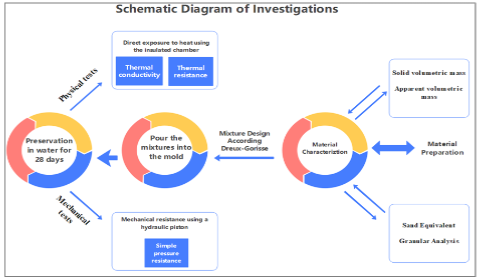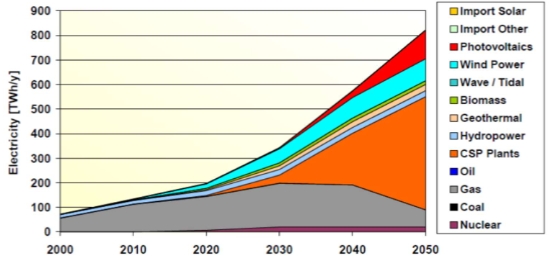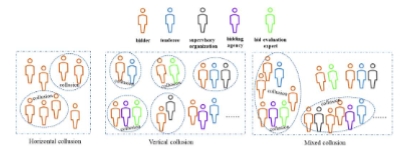Emerging trends in sustainable design: Integrating museums for a resilient future
Abstract
The paper unfolds the intricate tapestry of sustainable design, weaving in the pivotal role of renewable energy systems and astutely tying it to the eco-conscious blueprint of modern museums. The introduction sheds light on the potent impact of sustainable design in mitigating environmental hurdles and fostering a greener, more sustainable future, with a nuanced nod towards sustainability in museum management and design. Motivated by an aspiration to traverse diverse viewpoints and methodologies in sustainable design, the research stretches across numerous sectors—encompassing construction, architecture, engineering, manufacturing, software development, and notably, museum design—intending to carve out energy-sparing and ecologically mindful solutions. This paper underscores the imperative of astute design practices that optimize structures, such as museums, to maximize the utilization of renewable energy resources like solar arrays, wind turbines, and geothermal systems. It advocates for a burgeoning need to escalate the horizon of sustainable design beyond singular buildings, intertwining standalone energy systems at multiple tiers—from community power grids to expansive urban networks—ensuring a streamlined energy distribution and curbing waste. Wading through the literature review, an exploration of varied sustainable design strategies unfolds, encompassing facets like supply chain management, product safety, architectural design, manufacturing, food packaging, transportation, and pedagogy, with a specific lens on embedding sustainability in museum infrastructure and operations. The culmination of the paper discerns ten cardinal trends in sustainable design, spanning from the integration of renewable energy systems to the infusion of sustainable education and positive psychological interventions in educational institutions, thereby spotlighting the metamorphosing terrain of sustainable design across an array of disciplines.
References
[1]Kristinsdóttir A. Toward sustainable museum education practices: Confronting challenges and uncertainties. Museum Management and Curatorship 2017; 32(5): 424–439. doi: 10.1080/09647775.2016.1250104
[2]Pop IL, Borza A. Factors influencing museum sustainability and indicators for museum sustainability measurement. Sustainability 2016; 8(1): 101. doi: 10.3390/su8010101
[3]Pop IL, Borza A, Buiga A, et al. Achieving cultural sustainability in museums: A step toward sustainable development. Sustainability 2019; 11(4): 970. doi: 10.3390/su11040970
[4]King B, Lord B (editors). The Manual of Museum Learning. Rowman & Littlefield Publishers; 2015.
[5]Besterman T. Cultural equity in the sustainable museum. In: The Routledge Companion to Museum Ethics. Routledge; 2012. pp. 239–255.
[6]Kampasakali E, Fardi T, Pavlidou E, Christofilos D. Towards sustainable museum conservation practices: A study on the surface cleaning of contemporary art and design objects with the use of biodegradable agents. Heritage 2021; 4(3): 2023–2043. doi: 10.3390/heritage4030115
[7]Merriman N. Museum collections and sustainability. Cultural Trends 2008; 17(1): 3–21. doi: 10.1080/09548960801920278
[8]Brown KE, Davis P, Raposo L. In: Rueda ASG (translator). On Community and Sustainable Museums. EU-LAC-MUSEUMS; 2019.
[9]Alcaraz C, Hume M, Mort GS. Creating sustainable practice in a museum context: Adopting service-centricity in non-profit museums. Australasian Marketing Journal 2009; 17(4), 219–225. doi: 10.1016/j.ausmj.2009.06.003
[10]Link T. Models of sustainability: Museums, citizenship, and commonwealth. Museums & Social Issues 2006; 1(2): 173–190. doi: 10.1179/msi.2006.1.2.173
[11]Biancardi A, Colasante A, D’Adamo I. Sustainable education and youth confidence as pillars of future civil society. Scientific Reports 2023; 13: 955. doi: 10.1038/s41598-023-28143-9
[12]Dong X, Zhang X, Zhang C, Bi C. Building sustainability education for green recovery in the energy resource sector: A cross country analysis. Resources Policy 2023; 81: 103385. doi: 10.1016/j.resourpol.2023.103385
[13]Yu Z, Xu W, Yu L. Constructing an online sustainable educational model in COVID-19 pandemic environments. Sustainability 2022; 14(6): 3598. doi: 10.3390/su14063598
[14]Asyraf MRM, Syamsir A, Zahari NM, et al. Product development of natural fibre-composites for various applications: Design for sustainability. Polymers 2022; 14(5): 920. doi: 10.3390/polym14050920
[15]Polo-Mendoza R, Martinez-Arguelles G, Peñabaena-Niebles R. A multi-objective optimization based on genetic algorithms for the sustainable design of Warm Mix Asphalt (WMA). International Journal of Pavement Engineering 2022; 1–21. doi: 10.1080/10298436.2022.2074417
[16]Tirkolaee EB, Aydin NS. Integrated design of sustainable supply chain and transportation network using a fuzzy bi-level decision support system for perishable products. Expert Systems with Applications 2022; 195: 116628. doi: 10.1016/j.eswa.2022.116628
[17]Murray P. The Sustainable Self: A Personal Approach to Sustainability Education. Routledge; 2012.
[18]Eslamipoor R, Nobari A. A reliable and sustainable design of supply chain in healthcare under uncertainty regarding environmental impacts. Journal of Applied Research on Industrial Engineering 2023; 10(2): 256–272. doi: 10.22105/jarie.2022.335389.1461
[19]He B, Wu J, Xiao J. Product safety risk assessment approach to sustainable design. International Journal of Precision Engineering and Manufacturing-Green Technology 2023; 10(3): 783–788. doi: 10.1007/s40684-022-00490-4
[20]Taher AH, Elbeltagi EE. Integrating building information modeling with value engineering to facilitate the selection of building design alternatives considering sustainability. International Journal of Construction Management 2023; 23(11): 1886–1901. doi: 10.1080/15623599.2021.2021465
[21]Kitchenham B, Charters S. Guidelines for Performing Systematic Literature Reviews in Software Engineering. Keele University; 2007. Volume 2. pp. 1–65.
[22]Webster J, Watson RT. Analyzing the past to prepare for the future: Writing a literature review. MIS Quarterly 2002; 26(2): xiii–xxiii.
[23]Kitchenham B. Procedures for Performing Systematic Reviews. Keele University; 2004. Volume 33. pp. 1–26.
Copyright (c) 2023 Tao-Hua Wang, Hao-Chiang Koong Lin, Cheng-Tsung Li

This work is licensed under a Creative Commons Attribution 4.0 International License.












